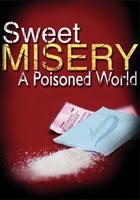Seattle Pi
DAvid Guttenfelder
Eric Talmadge
DAvid Guttenfelder
Eric Talmadge
IWAKI, Japan (AP) — Fukushima was just emerging from the snows of winter when the disaster hit — a 9.0-magnitude earthquake, the strongest in Japan's recorded history, followed by a tsunami.
The wall of water destroyed much of the northeastern coast on March 11. In the northeast region of Fukushima, a different disaster was brewing: Three reactors at the Fukushima Dai-ichi nuclear plant were melting down, irreparably damaged by the super tremor.
Now, as the snows are beginning to fall again, the government has announced the plant has attained a level of stability it is calling a "cold shutdown." As many as 3,000 workers — plumbers, engineers, technicians — stream into the facility each day.
The tsunami's destruction is still visible. Mangled trucks, flipped over by the wave, sit alongside the roads inside the complex, piles of rubble stand where the walls of the reactor structures crumbled and large pools of water still cover parts of the campus.
In the ghost towns around Fukushima Dai-ichi, vines have overtaken streets, feral cows and owner-less dogs roam the fields. Dead chickens rot in their coops.
The tens of thousands of people who once lived around the plant have fled. They are now huddling in gymnasiums, elementary school classrooms, bunking with friends, sometimes just sleeping in their cars, moving from place to place as they search for alternatives.
For those who lived on the perimeter of the Fukushima Dai-ichi nuclear plant, fliers used to come in the mail every so often explaining that someday this might happen. Most recipients saw them as junk mail, and threw them away without a second glance. For those who did read them, the fliers were always worded to be reassuring — suggesting that although a catastrophic nuclear accident was extremely unlikely, it could require evacuating the area.
Never was it even hinted that the evacuation could last years, or decades.
At most of the shelters, food is doled out military-style, at set times. Personal space is extremely limited, often just big enough to fit a futon and the collective snoring at night makes sleep fitful, at best. Baths are public, cramped, dark.
The total amount of radiation released from the plant is still unknown, and the impact of chronic low-dose radiation exposures in and around Fukushima is a matter of scientific debate.
Recent studies also suggest Japan continues to significantly underestimate the scale of the disaster — which could have health and safety implications far into the future.
According to a study led by Andreas Stohl the Norwegian Institute for Air Research, twice as much radioactive cesium-137 — a cancer-causing agent — was pumped into the atmosphere than Japan had announced, reaching 40 percent of the total from Chernobyl. The French Institute for Radiological Protection and Nuclear Safety found 30 times more cesium-137 was released into the Pacific than the plant's owner has acknowledged.
Under a detailed roadmap, plant operator Tokyo Electric Power Co. will remove the melted nuclear fuel, most of which is believed to have fallen to the bottom of the core or even down to the bottom of the larger, beaker-shaped containment vessel, a process that is expected to begin in 10 years.
All told, decommissioning the plant will likely take 40 years.
The wall of water destroyed much of the northeastern coast on March 11. In the northeast region of Fukushima, a different disaster was brewing: Three reactors at the Fukushima Dai-ichi nuclear plant were melting down, irreparably damaged by the super tremor.
Now, as the snows are beginning to fall again, the government has announced the plant has attained a level of stability it is calling a "cold shutdown." As many as 3,000 workers — plumbers, engineers, technicians — stream into the facility each day.
The tsunami's destruction is still visible. Mangled trucks, flipped over by the wave, sit alongside the roads inside the complex, piles of rubble stand where the walls of the reactor structures crumbled and large pools of water still cover parts of the campus.
In the ghost towns around Fukushima Dai-ichi, vines have overtaken streets, feral cows and owner-less dogs roam the fields. Dead chickens rot in their coops.
The tens of thousands of people who once lived around the plant have fled. They are now huddling in gymnasiums, elementary school classrooms, bunking with friends, sometimes just sleeping in their cars, moving from place to place as they search for alternatives.
For those who lived on the perimeter of the Fukushima Dai-ichi nuclear plant, fliers used to come in the mail every so often explaining that someday this might happen. Most recipients saw them as junk mail, and threw them away without a second glance. For those who did read them, the fliers were always worded to be reassuring — suggesting that although a catastrophic nuclear accident was extremely unlikely, it could require evacuating the area.
Never was it even hinted that the evacuation could last years, or decades.
At most of the shelters, food is doled out military-style, at set times. Personal space is extremely limited, often just big enough to fit a futon and the collective snoring at night makes sleep fitful, at best. Baths are public, cramped, dark.
The total amount of radiation released from the plant is still unknown, and the impact of chronic low-dose radiation exposures in and around Fukushima is a matter of scientific debate.
Recent studies also suggest Japan continues to significantly underestimate the scale of the disaster — which could have health and safety implications far into the future.
According to a study led by Andreas Stohl the Norwegian Institute for Air Research, twice as much radioactive cesium-137 — a cancer-causing agent — was pumped into the atmosphere than Japan had announced, reaching 40 percent of the total from Chernobyl. The French Institute for Radiological Protection and Nuclear Safety found 30 times more cesium-137 was released into the Pacific than the plant's owner has acknowledged.
Under a detailed roadmap, plant operator Tokyo Electric Power Co. will remove the melted nuclear fuel, most of which is believed to have fallen to the bottom of the core or even down to the bottom of the larger, beaker-shaped containment vessel, a process that is expected to begin in 10 years.
All told, decommissioning the plant will likely take 40 years.































No comments:
Post a Comment